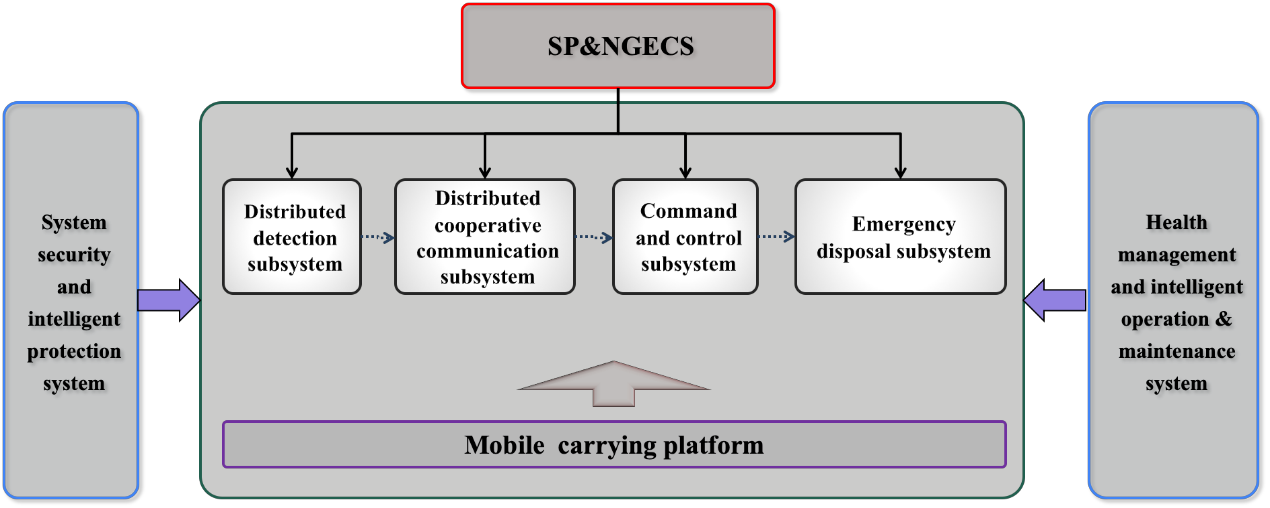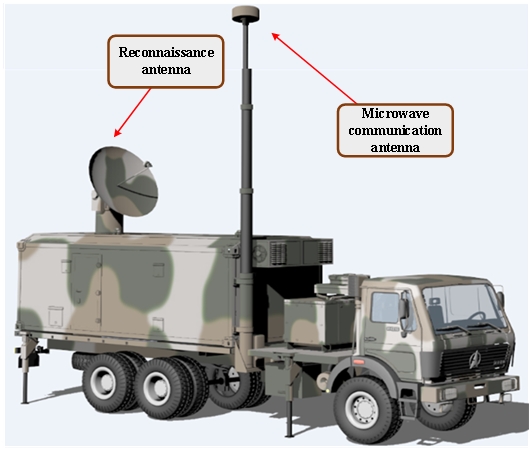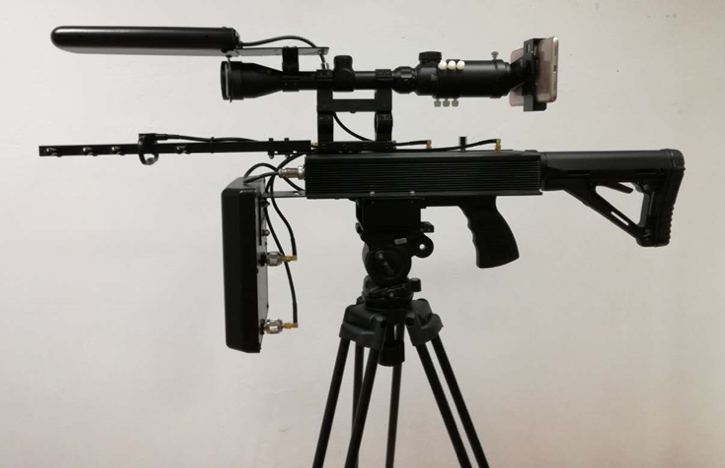With the security requirements, one of the crucial points is the protection and oppression against invading UAVs. To address this problem, a verifiably efficient solution, the spatial protection &emergency disposal system,is proposed.
The composition of the spatial protection &emergency disposal system is shown in figure below.

Figure Components of spatial protection & emergency disposal system
It is consisted of five types of subsystems:
A)Distributed detectionsubsystem: providing the functions of radio detection, radar reconnaissance, identification and recheck, etc.
B)Command and control subsystem: works as strong brain and nerves controlling drones, anti-drone and other equipment in acceleration, providing the functions of analysis, early warning, command and scheduling applications based on intelligent data processing.
C)Distributed cooperative communication subsystem: providing the functions of distributed self-organizing communication, which has a uniform standards and compatibility.
D)Emergency disposal subsystem: providing the functions of disposal to invading UAVs and airborne communication equipment.
E)Mobile platform: providing the special vehicle, UAV, equipment compartment and corresponding electrical and mechanical supporting.
The large-scale RM system has a long operation distance of above 100km at UAV data link working frequency of UHF and C band. Each set of large-scale RM system consists of one UHF-Band detection compartment, one UHF-Band RM compartment, two C-Band detection compartment, one C-Band RMcompartment.

Figure Sketch map of large-scale RM system
The middle-scale RM system has a medium operation distance of 4km.

Figure Sketch map of middle-scale RM system
The middle-scale RM system can be easily used and has a shorter operation distance of 1km.

Figure Sketch map of small-scale RM system